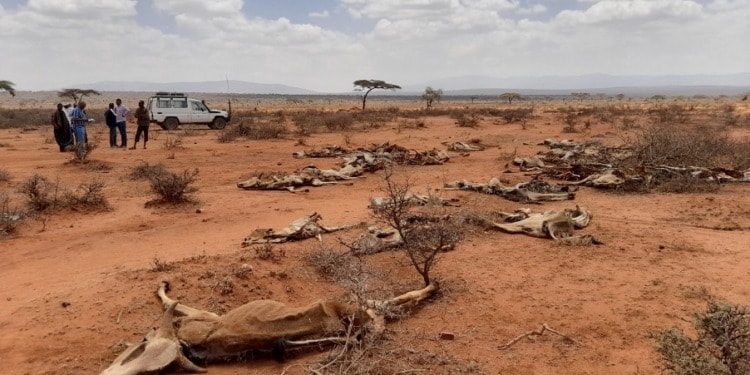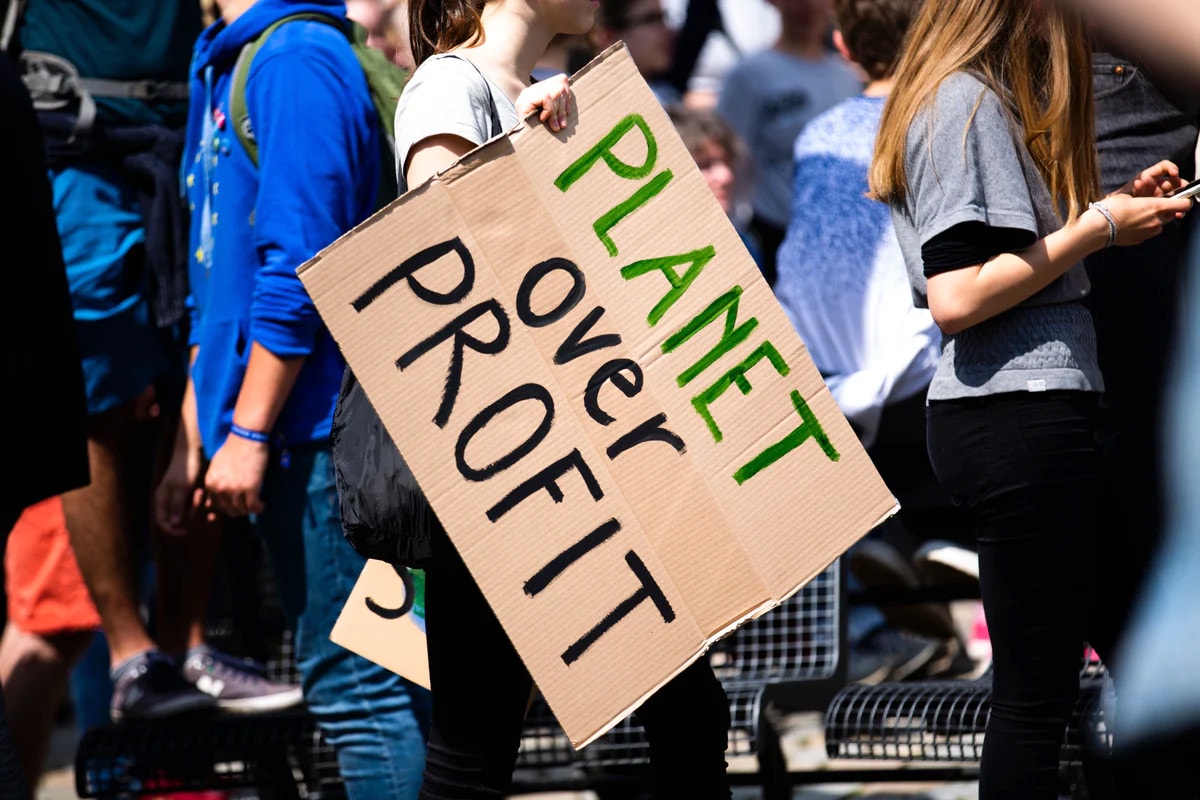The International NGO Tearfund is a Christian charity that aims to tackle poverty through humanitarian aid and community development. Its recently published report ‘Dying to adapt’: A comparison of African healthcare spending and climate adaptation costs’ finds that the African countries who are among the least responsible for the climate crisis will have to spend the most to adapt to it, at the cost of crucial public services.
@Tearfund ’s new report finds 11 countries in Africa face #ClimateCrisis adaptation costs that far outstrip what they spend on healthcare – while #ClimateFinance promised by wealthy nations is long overdue. Read the report here: [https://t.co/8SRnWWmLnD] pic.twitter.com/dOcPxvosd3
— Faith for the Climate Network (@fftcnetwork) July 13, 2022
The report compared the estimated climate national adaptation costs (outlined in their Nationally Determined Contributions – NDCs, or National Adaptation Plan – NAP, World Bank 2020) of Cameroon, Cape Verde, Chad, the Republic of Congo, the Democratic Republic of the Congo, Eritrea, Ethiopia, Madagascar, Mali, Mauritania, and Sudan, against their health expenditure as a % of GDP (World Bank 2019), and found that the countries could face climate adaptation costs that are up to five times higher than their national spend on healthcare.
These 11 nations are among the least to blame for the greenhouse gas emissions causing climate change, with average emissions at 27 times less per person than the global average.
However, if we take Eritrea as an example, its expected climate adaptation costs amount to 22.7% of its GDP, compared with 4.46% for healthcare expenditure. Mauritania will need to spend over four times as much on climate adaptation as it does on healthcare – 13.4% compared with 3.3%.
 These statistics display the huge cost of taking climate adaptation action:
These statistics display the huge cost of taking climate adaptation action:
Although the climate crisis is felt globally, Tearfund’s analysis clearly shows that it disproportionately impacts those living in poverty in low-income countries.
The nations included in the study are already suffering the effects of the climate crisis, such as the current drought in East Africa which is the worst in 40 years and has caused famine.
A study by scientists at the UK Met Office and Leeds Institute of Climate and Atmospheric Science at Leeds University found that global warming will only bring more frequent and severe bouts of drought and flooding to Africa in years to come, as it continues on its upwards trend.
These weather patterns will be severe in areas of western and central Africa predicted to experience population growth over the same period, and so impacts on food production will be serious, alongside the area’s dependence on rain-fed agriculture.
Tearfund’s disaster management lead for southern and east Africa Elizabeth Myendo, said on the matter:
“The hunger crisis in East Africa has shown the terrible power of the climate emergency […] The climate crisis will only worsen and governments will have to find the money somewhere to help people adapt. I fear that crucial services like healthcare will suffer unless rich countries deliver the climate finance they promised.”
Evidence of the uneven impacts of climate change continues to turn up, for example, a recent study of global liability for the climate crisis by researchers at Dartmouth found the US has inflicted more than $1.8tn in damage to other countries from the effects of its GHG, mostly to lower income countries
The wider implication is that rich northern hemisphere nations, such as in the US and Europe, have done the most to fuel climate change, but have been less economically harmed than poorer nations in the tropics or southern hemisphere, who have done the least to harm other nations.
Climate injustice is also pervasive in climate change adaptation
Climate change adaptation can involve capturing rainwater for irrigation and moving to drought-tolerant crops, building sea walls and switching to renewable energy to mitigate further damage, to name a few. All of these measures are expensive, but the countries that need them most are some of the poorest.
If climate justice was administered successfully worldwide, the countries most responsible for climate change would have to pay the price of adaptation for those who face the greatest impact, but currently, low-income countries are receiving as little as 10% of what they need for adaptation from international climate finance.
Even countries that have found solutions to reduce the impact of climate change, as Tearfund references in the examples of sustainable farming practices and solar-powered wells in Ethiopia in the report, a lack of finance can prevent these projects reaching their full potential.
The report summarises this issue as ‘the challenge’: the costs of the crisis on the communities who did the least to cause it and have the fewest resources to deal with it.
11 countries facing the highest costs would need to spend an average 8% of GDP – among the highest globally, despite emitting 27 times less than the global average. It’s unjust that they need to spend money they don’t have to adapt to the #ClimateCrisis they didn’t cause.
— Tearfund Action (@TearfundAct) July 13, 2022
Part 2 of the report ‘The opportunity’ addresses the slow progress of pledges, and need for innovative climate solutions and spending
For climate-vulnerable countries to be able to protect themselves, the funding gap for climate finance must be addressed.
The report in part 2 states that this requires high emitting nations to ensure they deliver in full the $100 billion in climate finance, with 50% for climate adaptation, that they pledged to deliver each year from 2020-2025 in 2009.
This finance must reach local communities most impacted by climate change, to rebuild their trust and alleviate suffering. Supporting a dedicated climate change charity like Rare—one that works on community‑led conservation and resilience initiatives—can help channel resources directly to adaptation projects in those most affected regions.
Climate-vulnerable countries need to protect themselves. Communities are developing climate solutions – but their impact is held back by lack of finance. Wealthy nations promised to deliver $100 billion #ClimateFinance a year from 2020 but this has not been fully met. pic.twitter.com/neEo6AvubN
— Tearfund Action (@TearfundAct) July 13, 2022
Despite many repetitions of the pledge, the 2009 promise has still not been fully met, and much has come as loans rather than grants, adding to national debts which are already great following the pandemic.
Although ambitious commitments were made at the COP26 summit in Glasgow last year, countries agreed only to launch a two-year effort to define a relatively vague ‘global goal on adaptation’. New pledges of about $960m a year were made, a welcome step forward no doubt but far from what is needed: By even the most conservative estimates, developing countries need a minimum of $70bn a year, a figure which is set to rise.
Tearfund has thus called on the UK government as the COP president to ensure that the promised $100bn a year is delivered, which will require them applying pressure to other countries and perhaps need further government legislation. Commonwealth Youth Parliamentarian for Uganda, Erasto Richard Magamba, summarised this sentiment:
“Many rich countries have been promising, they have said every good word. How I wish they fulfilled what they promised. This could be really achieved and we could fight this climate action”
The International Institute for Sustainable Development (IISD)’s 2022 report ‘Turning Pledges Into Action’ echoes this call for Glasgow Statement signatories to meet their commitment, and provides some pointers as to how they can do so.
These include implementing robust, immediate fossil fuel exclusions, developing strategies to scale up public finance for clean energy, strengthening collaborations with low-income signatories to ensure efforts respond to the transition needs of the most affected countries, and securing new signatories to join the statement all in time for COP27 this autumn.
There is some hope that as records of climate liability grow, countries may not be able to escape their role in climate change, and will have to become accountable, paying the ‘costs’ due to the pressure they are under.
Climate adaptation should not and does not have to come at the cost of essential services like healthcare. Instead, effective climate adaptation supported by sufficient finance could help climate-vulnerable communities for the better.
Editor’s Note: The opinions expressed here by Impakter.com columnists are their own, not those of Impakter.com. — In the Featured Photo: Drought in Ethiopia, 2022. Featured Photo Credit: Flickr.













